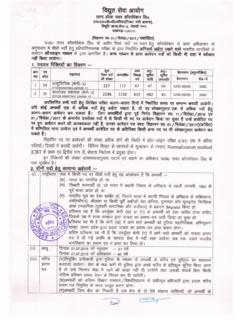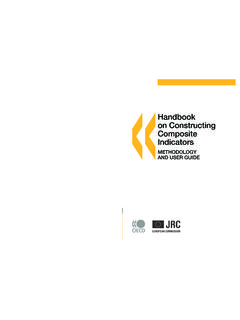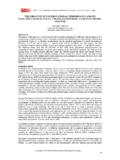Transcription of Benchmarking Study for Electricity Distribution …
1 Benchmarking Study for Electricity Distribution companies of Uttar Pradesh EXECUTIVE SUMMARY Prepared for: UTTAR PRADESH POWER CORPORATION COMPANY LIMITED Prepared by: MERCADOS ENERGY MARKETS INDIA PRIVATE LIMITED 31 August 2017 Benchmarking Study for Electricity Distribution companies of Uttar Pradesh: Executive Summary 2 INTRODUCTION The Hon'ble UPERC has notified the Uttar Pradesh Electricity Regulatory Commission (Multi Year Distribution Tariff) Regulations, 2014 (UPERC MYDT Regulations, 2014) on which inter-alia provides the procedure and guidelines for determination of Distribution and retail tariff in the State of Uttar Pradesh.
2 It is for the first time, that the Hon'ble Commission has issued tariff regulations for Multi Year Tariff control period encompassing the financial years 2017-18 to 2019-20 as before the said period, the tariff was being framed on annual basis. Regulation of the UPERC MYDT Regulations, 2014 mandates the Distribution licensees to undertake studies involving Benchmarking of the performance of the Discoms with the other Distribution licensees of the country, with the objective to establish the baseline norms and determine the performance standards for the Distribution licensees of the State.
3 The underlying objective is that in order to make the MYT regulations a success, it is imperative to define the improvement trajectory from the actual level up to the desired level. In view of the above, five Electricity Distribution companies (Discoms) of the State namely Paschimanchal Vidyut Vitran Nigam Limited (PVVNL), Purvanchal Vidyut Vitran Nigam Limited (PuVVNL), Dakshinanchal Vidyut Vitran Nigam Limited (DVVNL), Madhyanchal Vidyut Vitran Nigam Limited (MVVNL) and Kanpur Electricity Supply Company (KESCO) undertook Benchmarking studies to fulfil the objectives of the UPERC MYDT Regulations, 2014.
4 Benchmarking Benchmarking is a process that develops performance indices for specific entities and compares them to industry norms for the purpose of measuring entity performance and identifying areas needing improvement. It can provide useful ways to understand what drives the efficiency of a company. This Benchmarking process can reveal potential areas where a particular Discom s performance is lacking and point to directions for further detailed examination to identify any underlying contributing causes or mitigating factors to the performance gap.
5 Having a clear assessment of its strengths and weaknesses, a Discom can formulate a better strategy to improve its competitive position in the market place. Benchmarking Study for Electricity Distribution companies of Uttar Pradesh: Executive Summary 3 SIGNIFICANCE OF THE PROJECT The objective is to determine the current position of each State-owned Discom of Uttar Pradesh in terms of overall efficiency considering the factors such as operational, O&M expenses and financial parameters.
6 The outcomes of this Benchmarking Study will help the respective Discom to: i) identify the areas for improvement, ii) develop strategy to improve upon the identified areas. Based on the results, State owned Discoms of Uttar Pradesh may set a target for themselves and also assist the Hon'ble Commission to set the targets for each of the Discoms for the Control Period. APPROACH AND METHODOLOGY The approach towards this Benchmarking Study focuses on the identification of functional areas for performance measurement, selection of measurable and controllable parameters and Benchmarking of the Discoms against these parameters in their peer group.
7 The overall approach towards this Benchmarking Study can be defined as a five-stage process (Figure 1): Figure 1: Overall Approach for the Study STAGE VSTAGE IVSTAGE IIISTAGE IISTAGE IIdentification of Functional Areas for Performance MeasurementSelection of Variables under each Functional Area and data CollectionAnalysis of the Arithmetic Ranks of Discoms for Each Selected VariableApplication of PCA-DEA Methodology to Determine Efficiency Scores of DiscomsEstablishment of Ranks for each Discoms and Becnhmarking Benchmarking Study for Electricity Distribution companies of Uttar Pradesh.
8 Executive Summary 4 STAGE I: Identification of the Functional Areas In Stage I, a detailed literature survey was conducted by reviewing the current Benchmarking practices in the energy and utilities domain, recent reports on the performance of the Indian utilities, and the annual reports of the Discoms. The objective was to identify broad functional areas for performance measurement of the Discoms. The following four functional areas were identified: i) Operational Performance, ii) Operational & Maintenance Expenses, iii) Financial Performance, and iv) Capital Cost.
9 STAGE II: Selection of Variables and data Collection In the next stage, parameters linked with each of the four Functional Areas were identified. An initial list of thirty-eight (38) such parameters was prepared. Afterwards, questionnaire survey with industry experts was conducted to select most relevant parameters under each of the identified functional areas. The objective was to reduce redundancies and to select quantifiable and controllable parameters. The outcome of this exercise was a list of seventeen (17) selected parameters out of the initial list of 38.
10 Afterwards, a pool of thirty-three (33) State-owned Discoms was created which includes the five Discoms of UP viz. PVVNL, PuVVNL, DVVNL, MVVNL and KESCO. FY 2014-15 was selected as the base year for the Study to allow maximum coverage of selected parameters data . The data pertaining to all the 33 State-owned Discoms was collected from multiple sources such as: Audited Accounts, Reports of Ministry of Power and Dash Boards maintained by Ministry of Power. STAGE III: analysis of the Arithmetic Ranks for Selected Variables After the completion of data collection, analysis of the Discoms rankings as per each of the selected parameter was performed.







